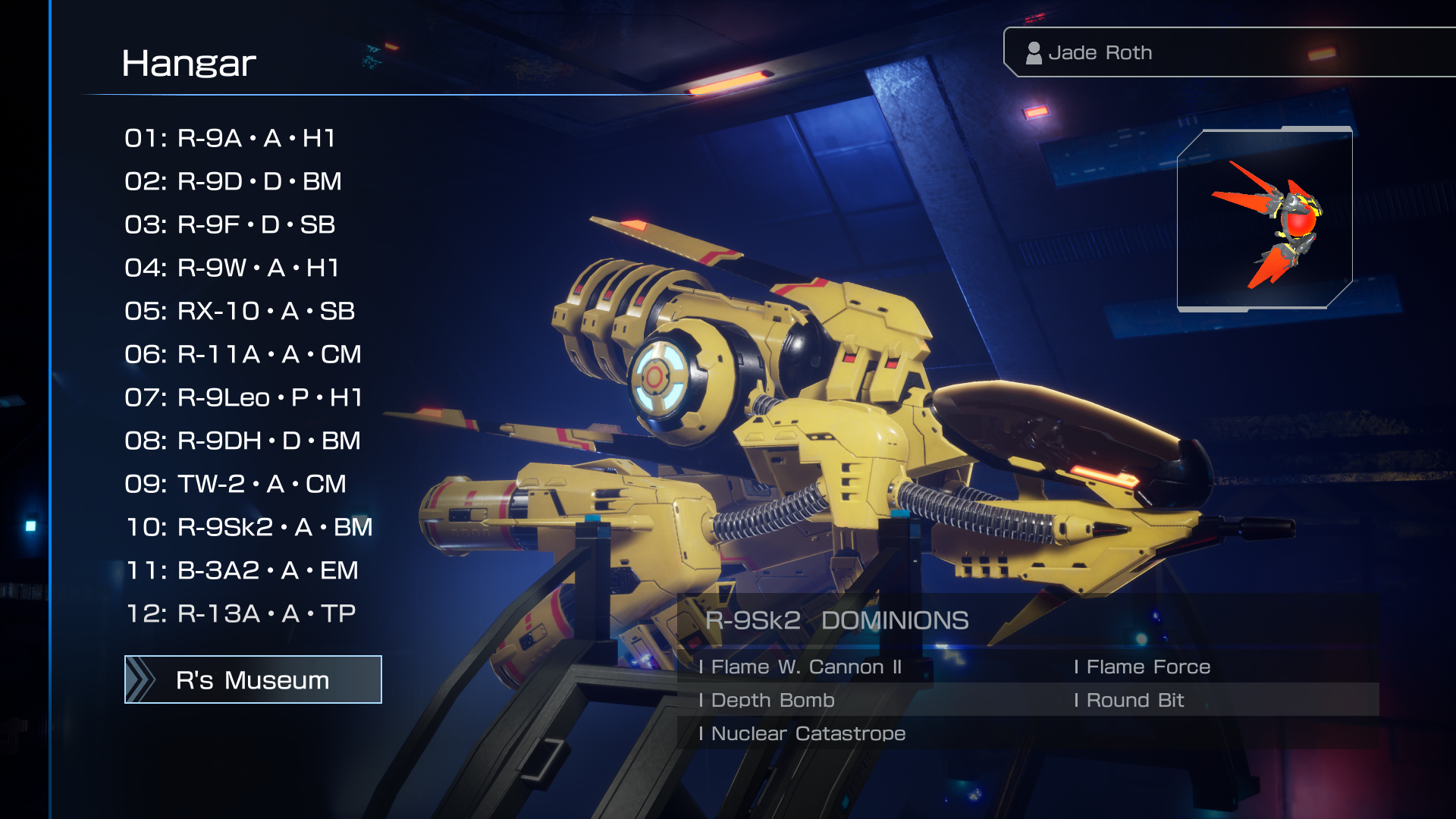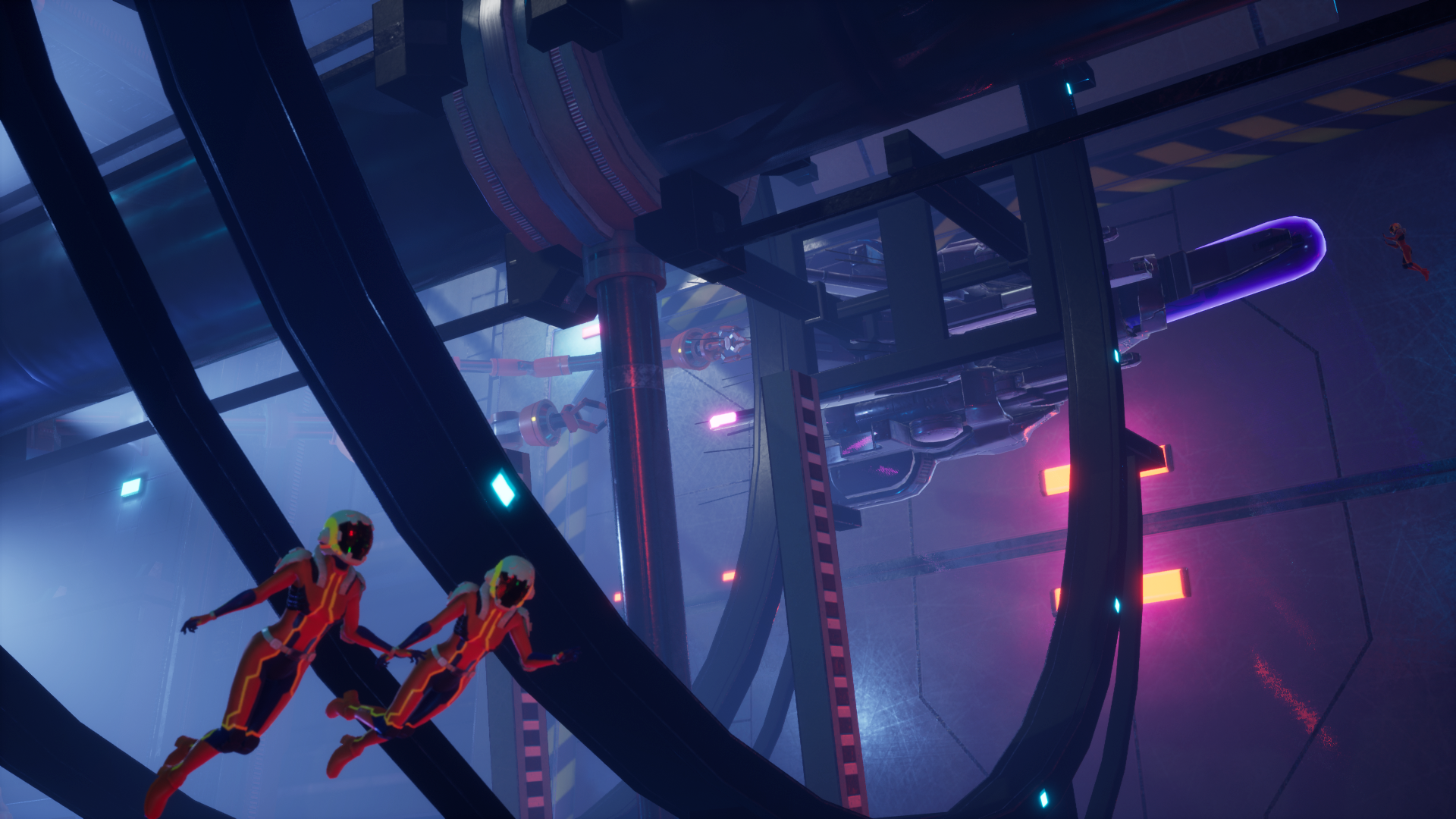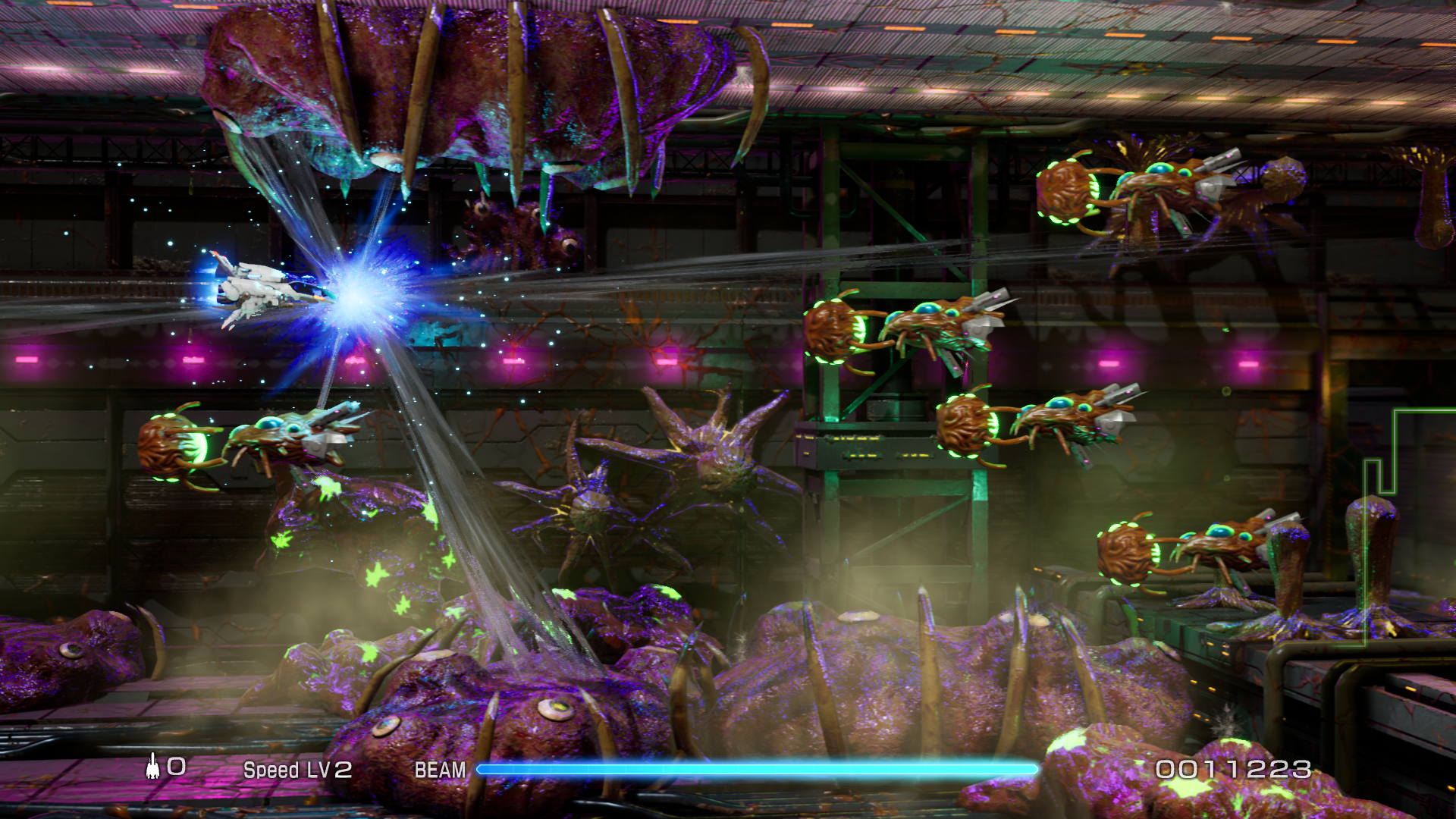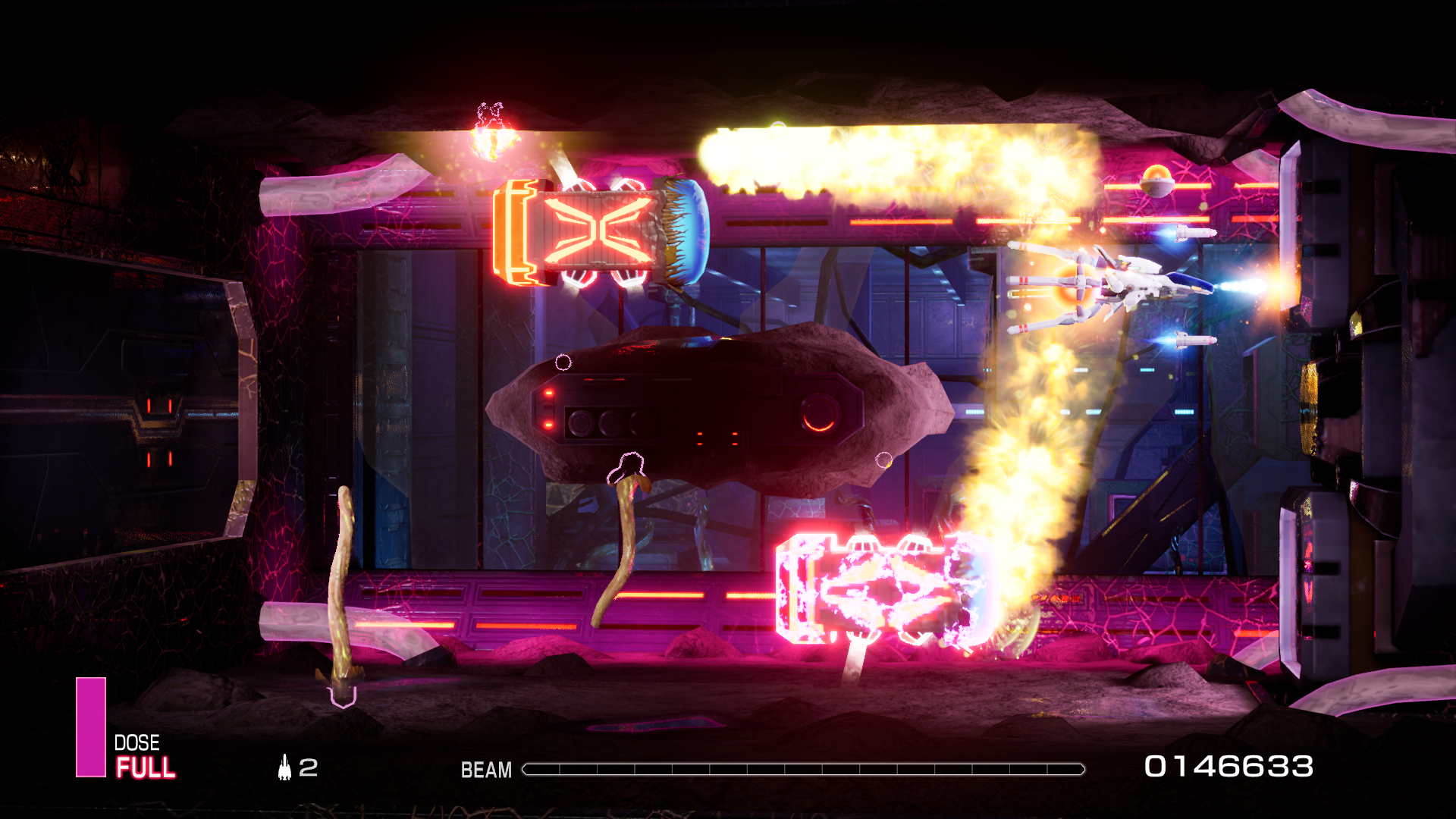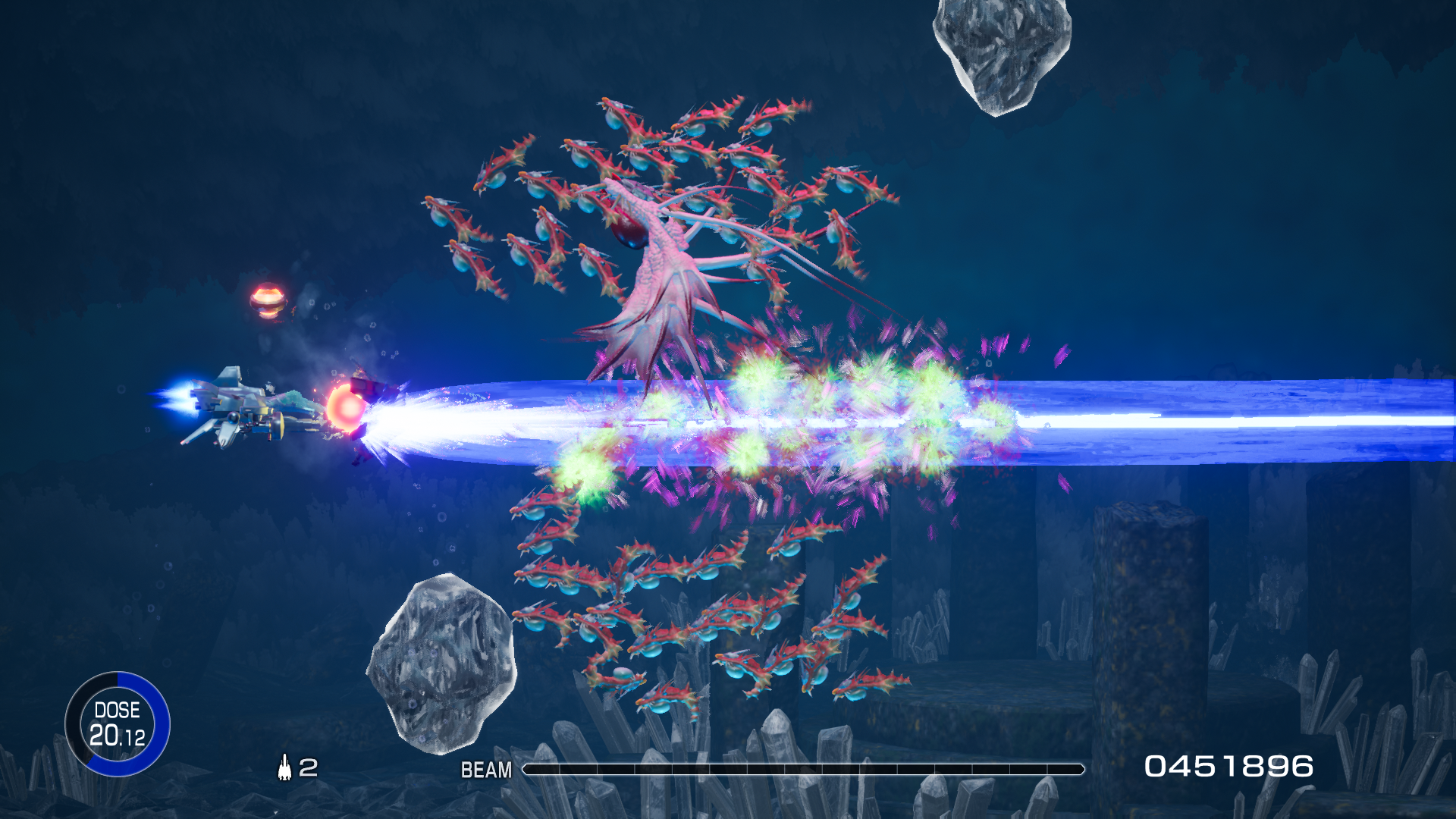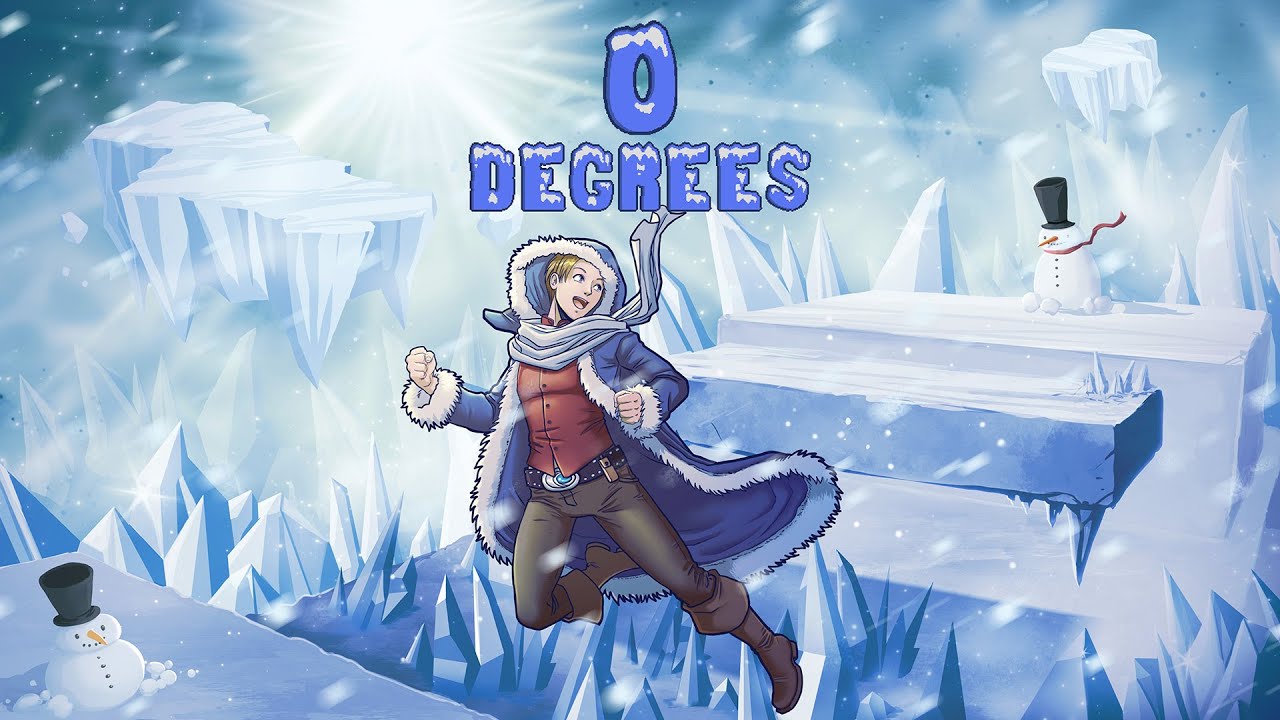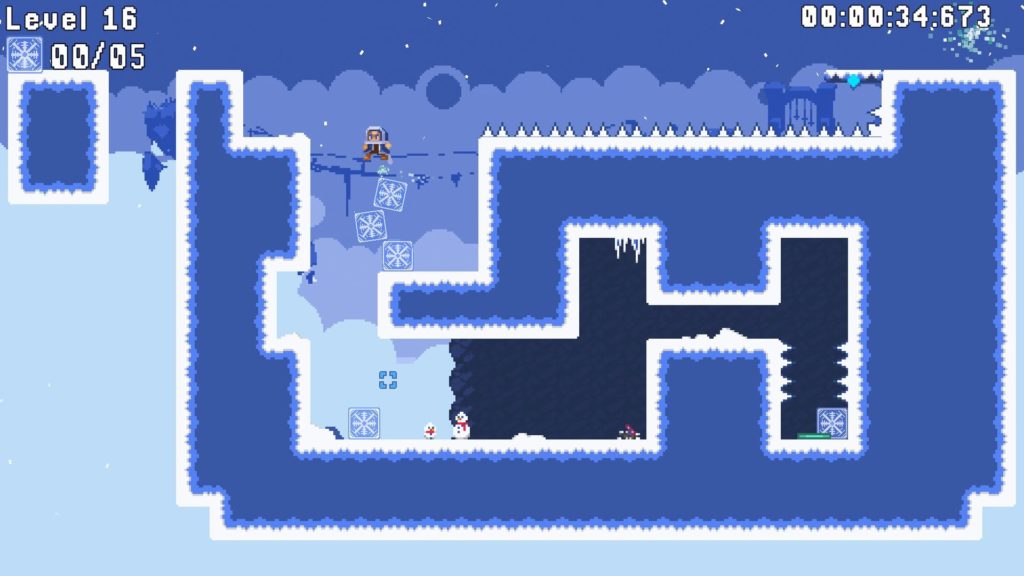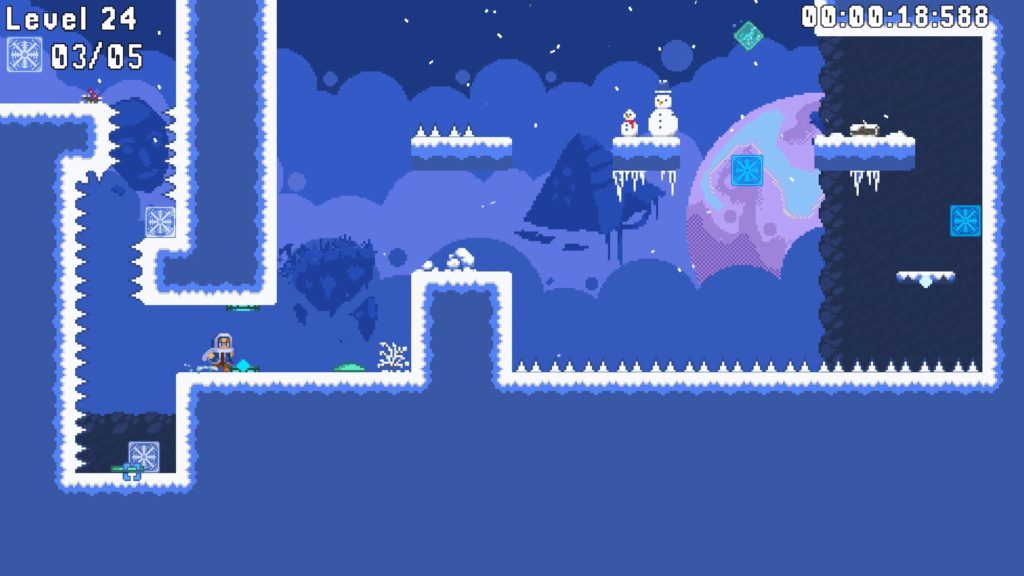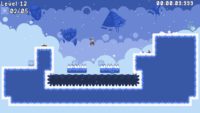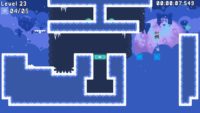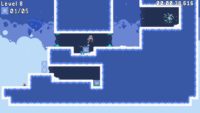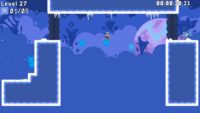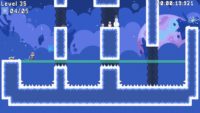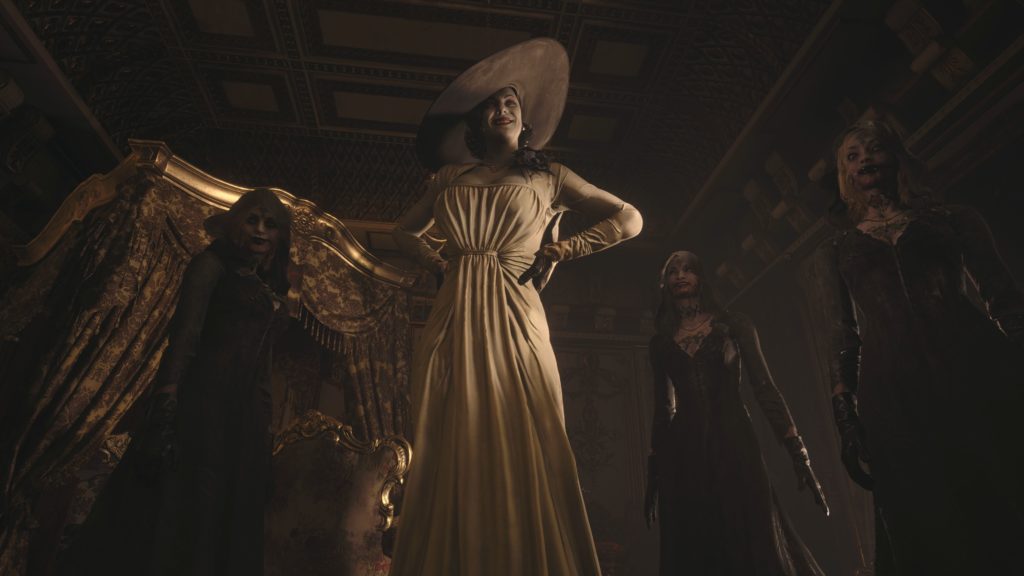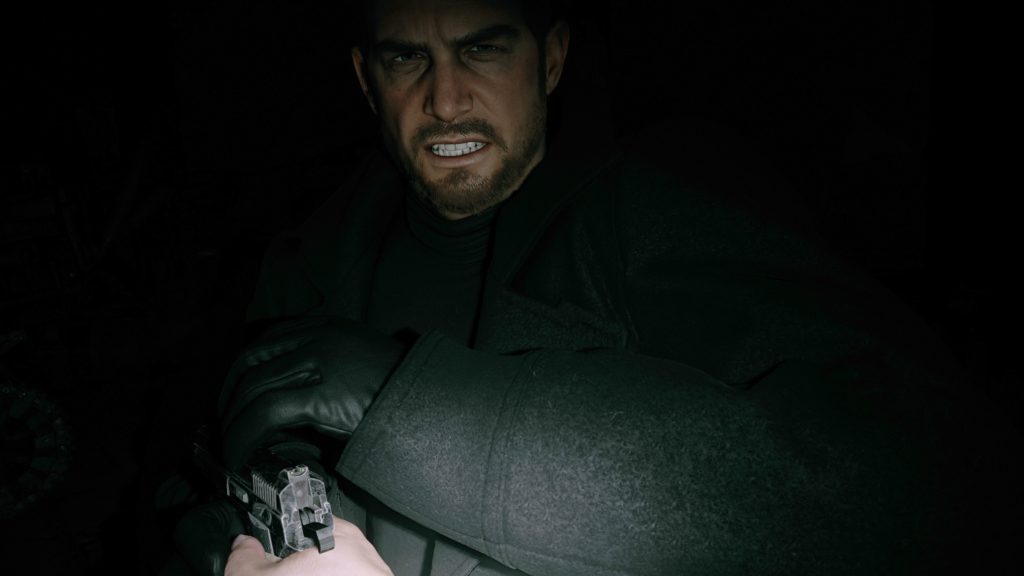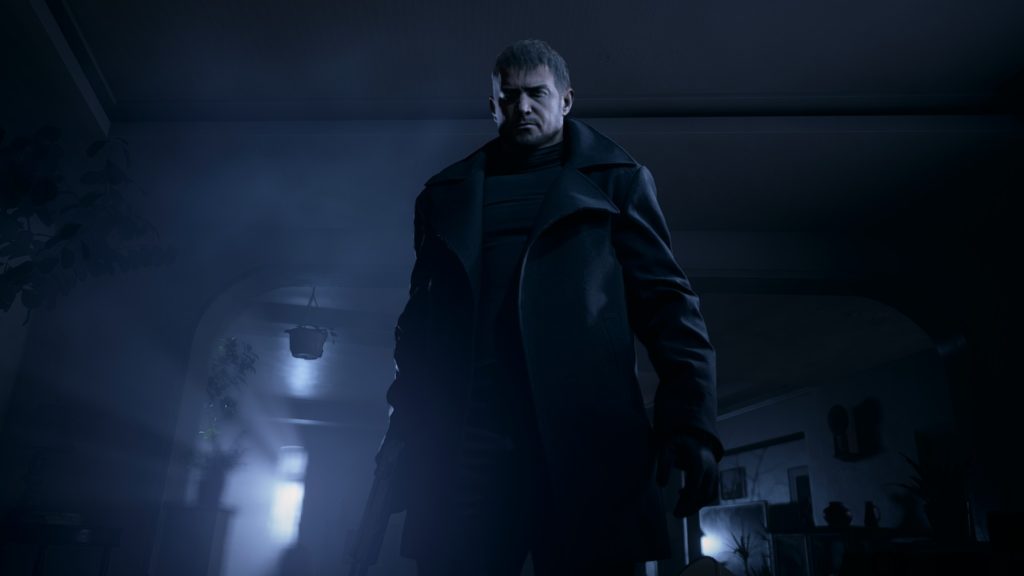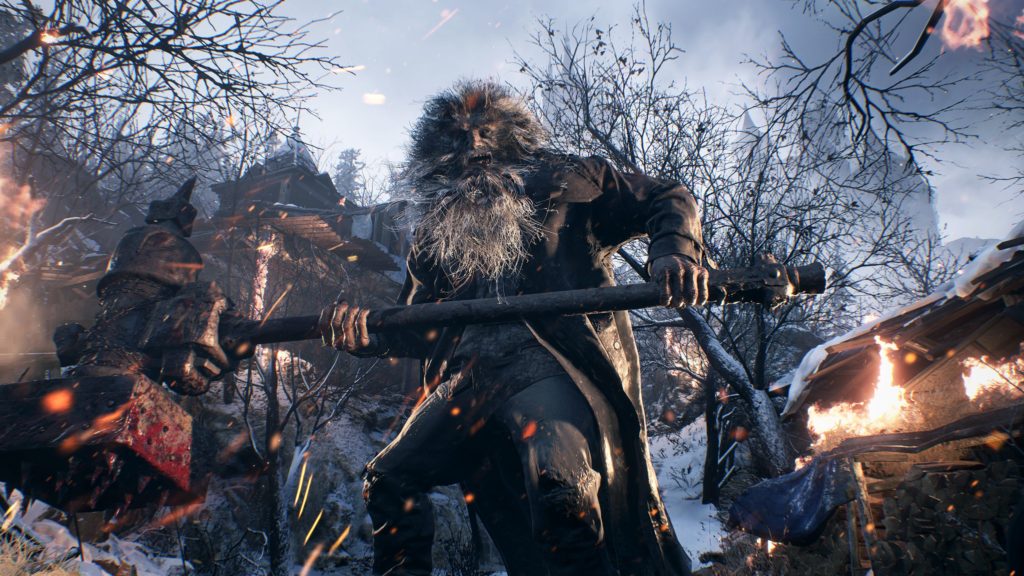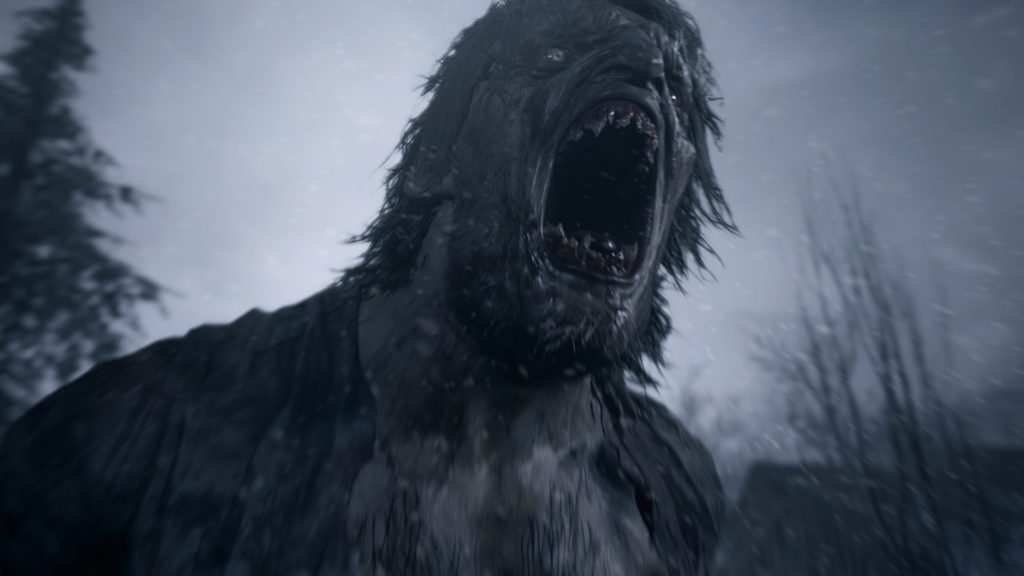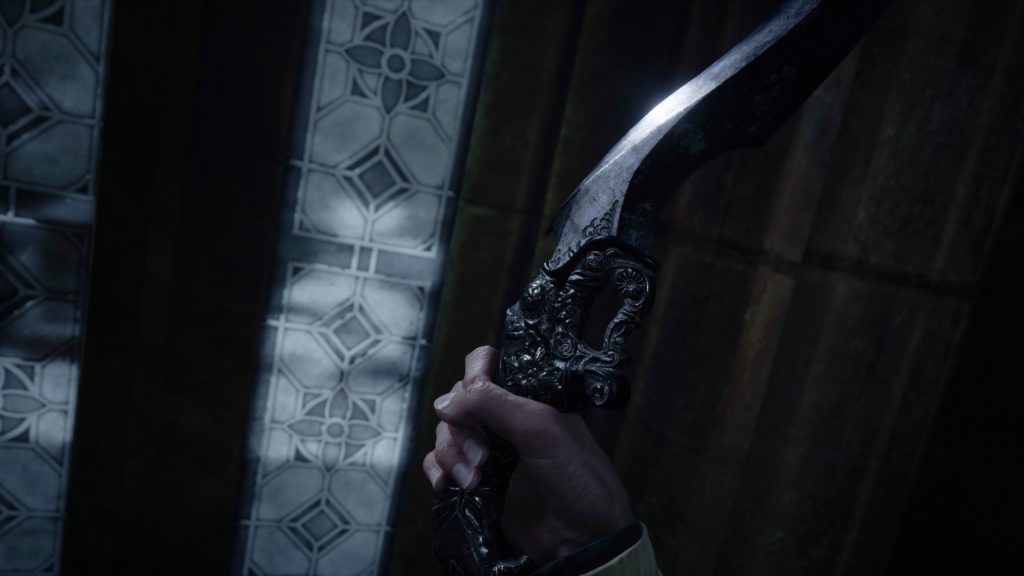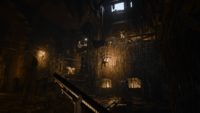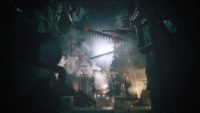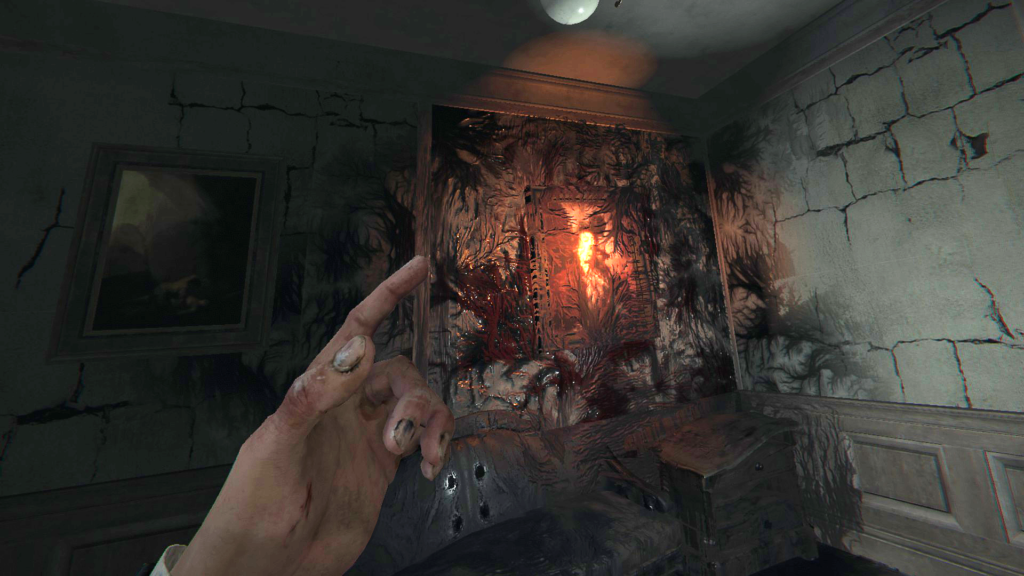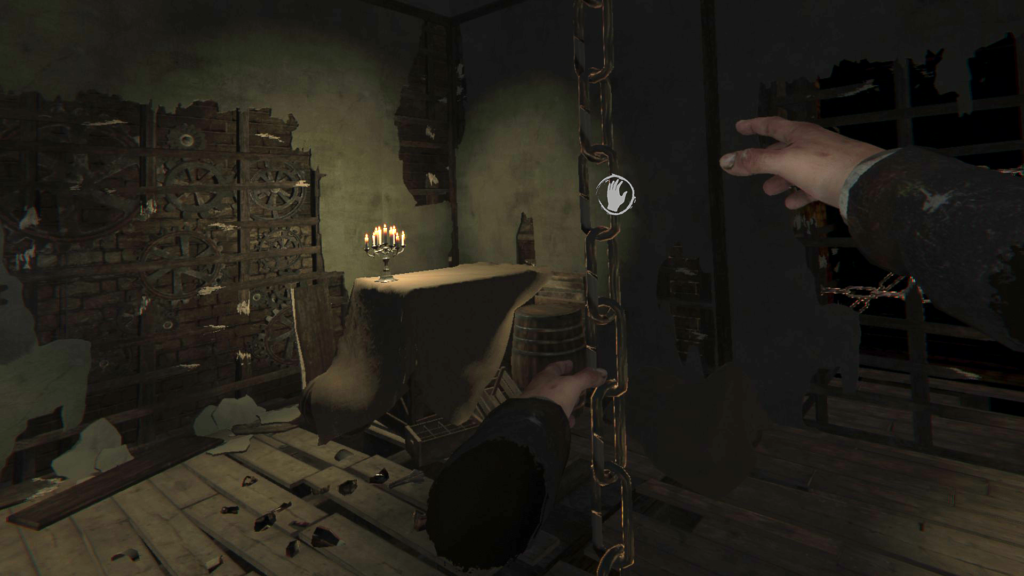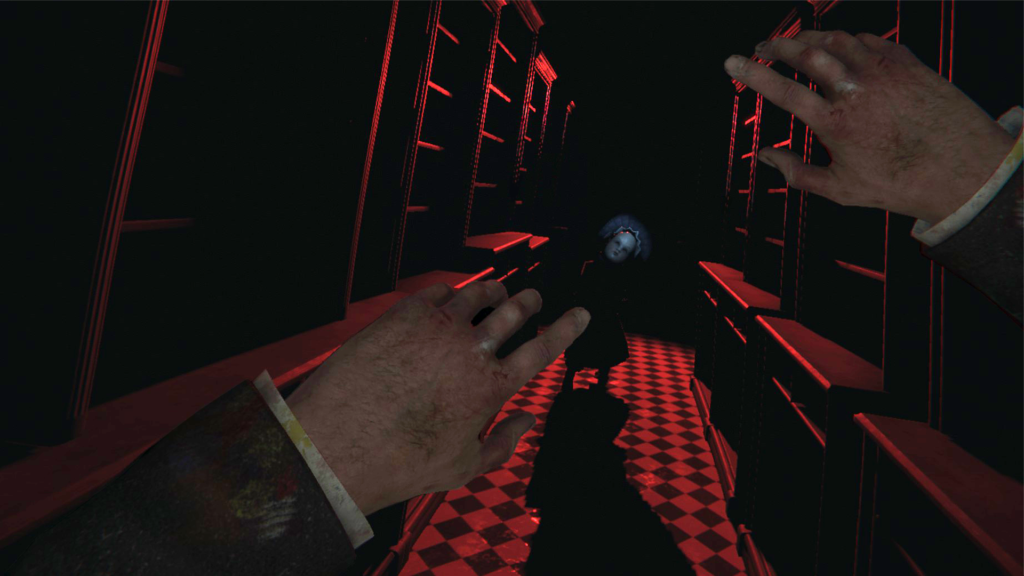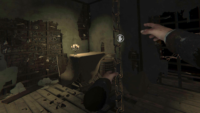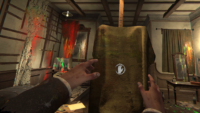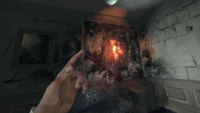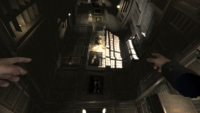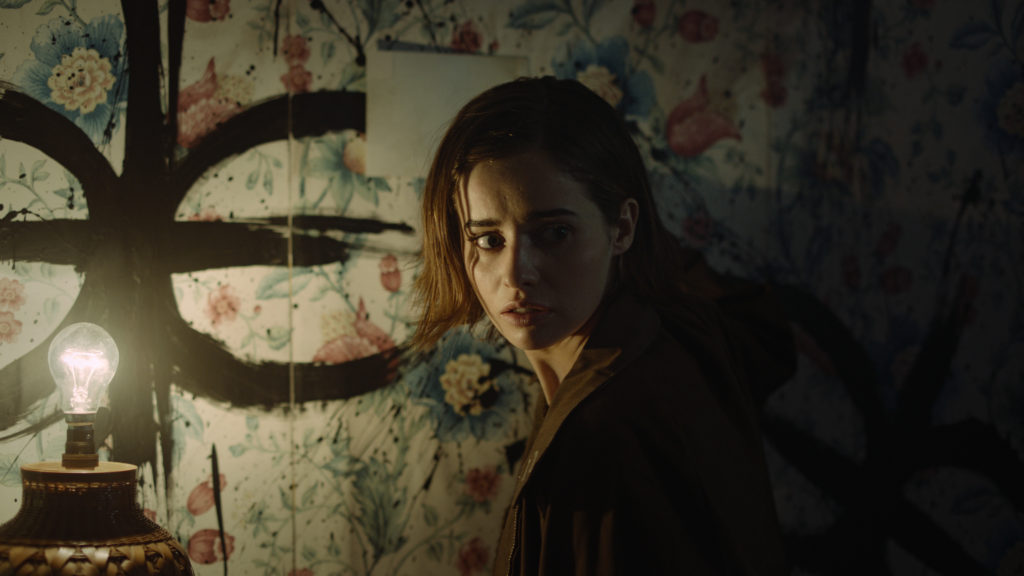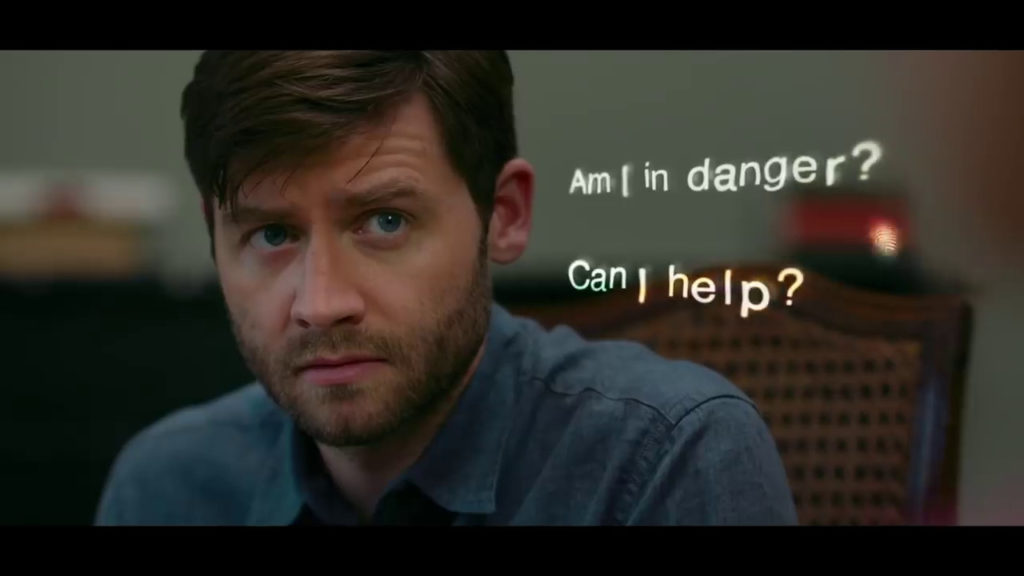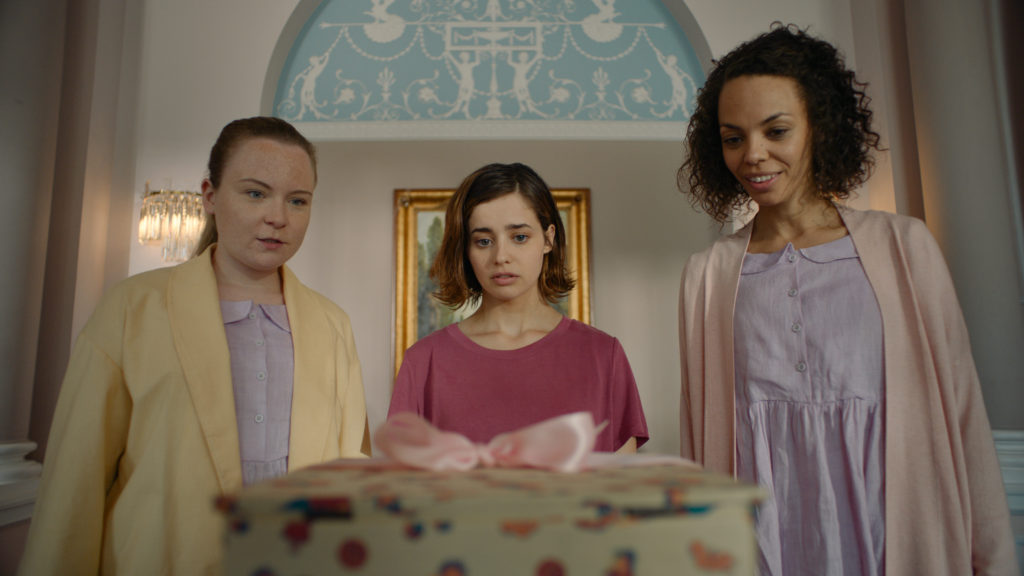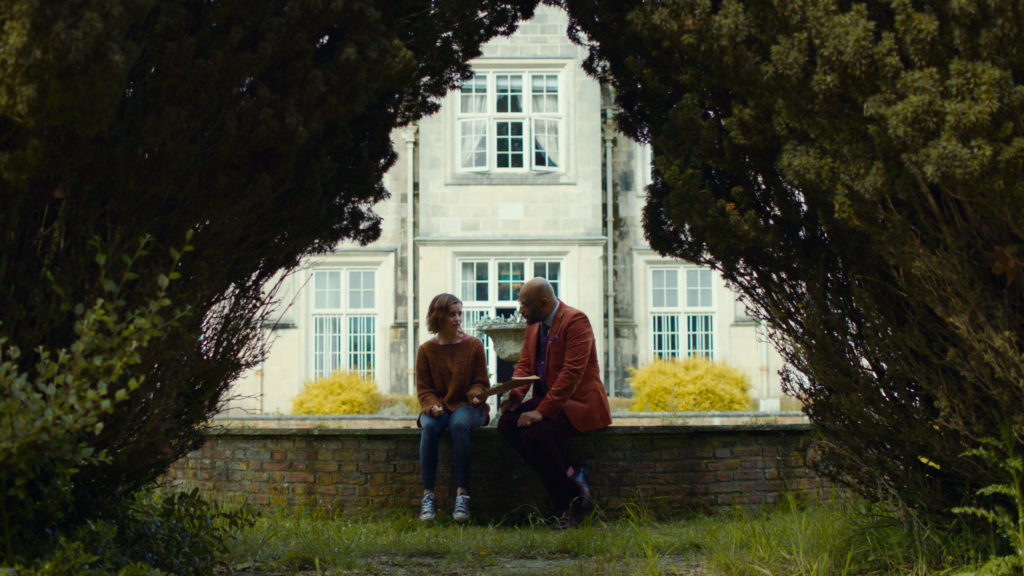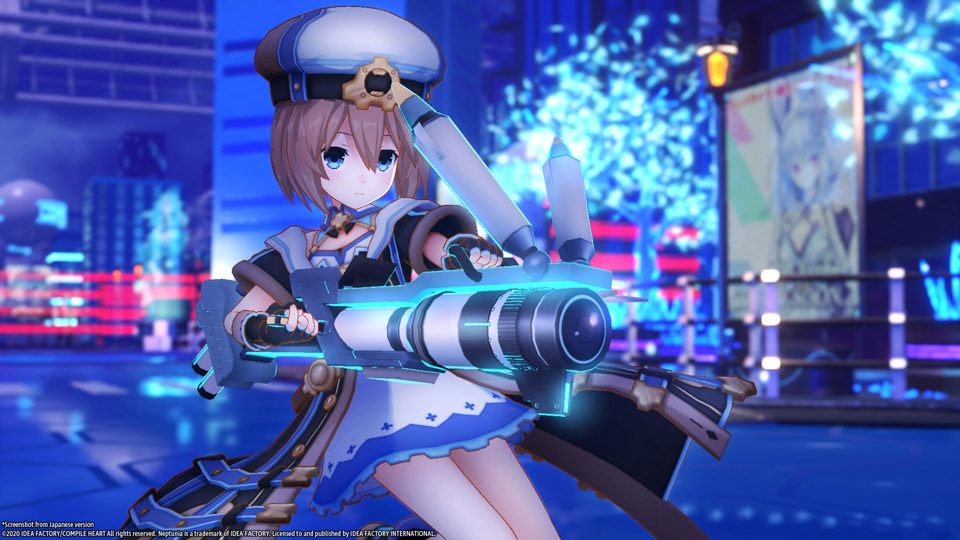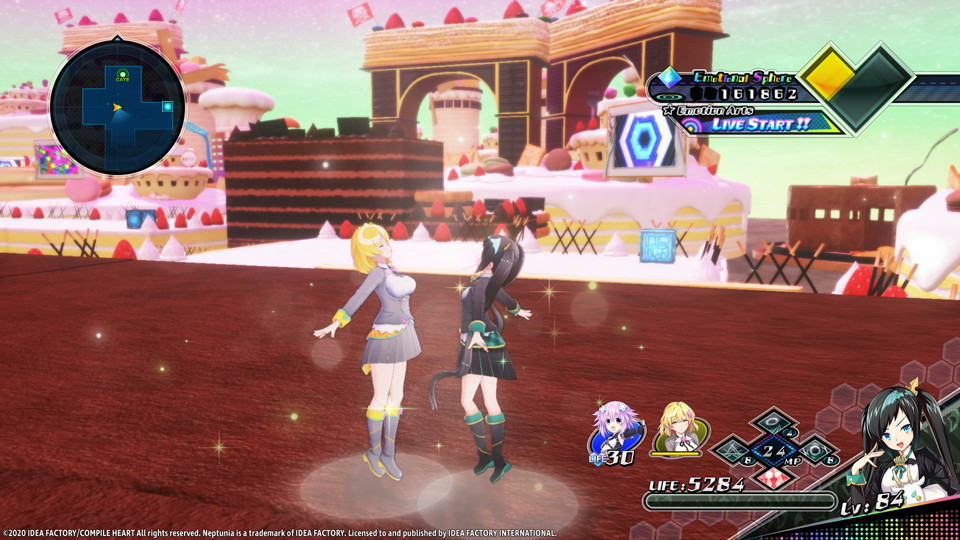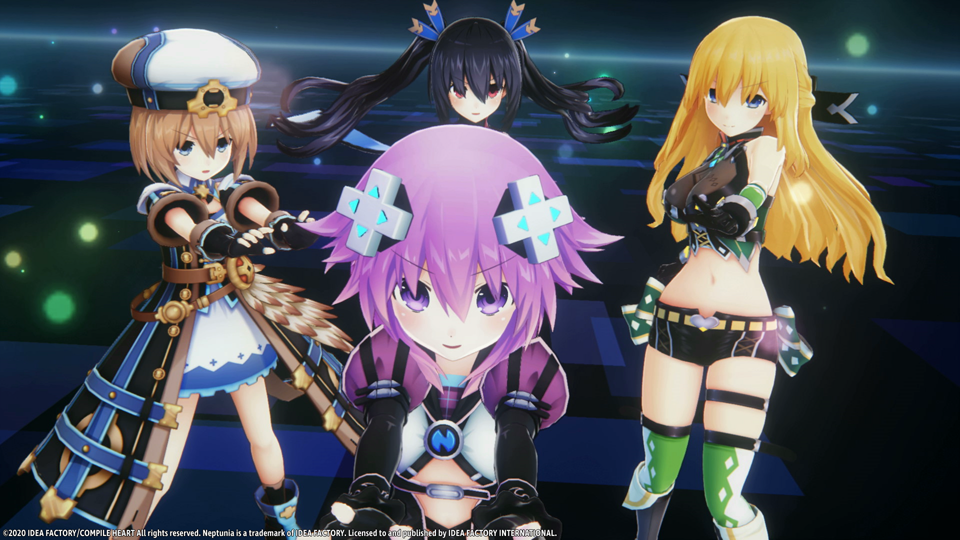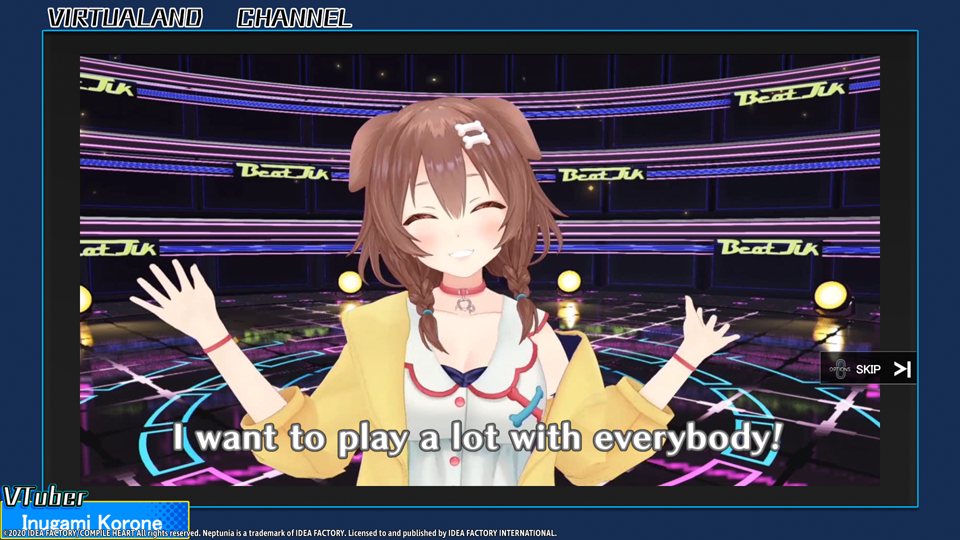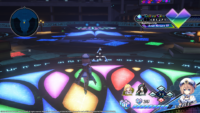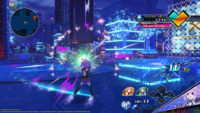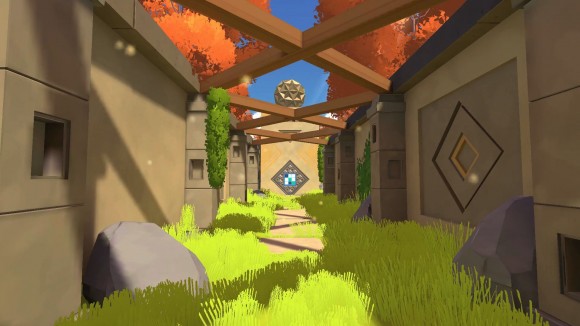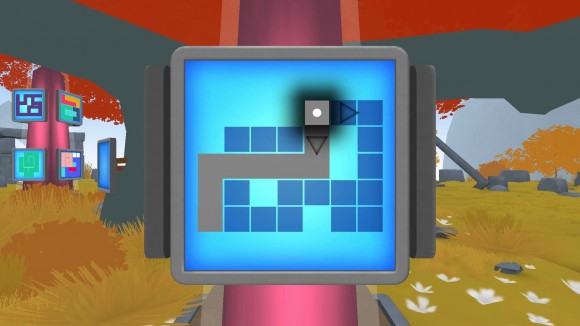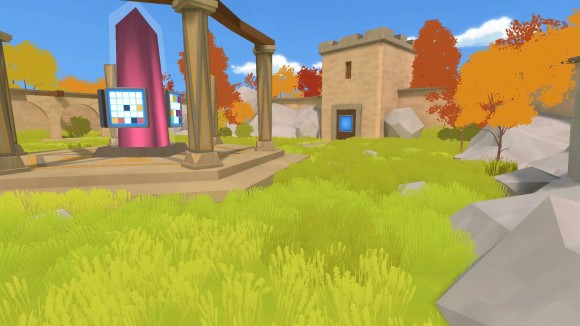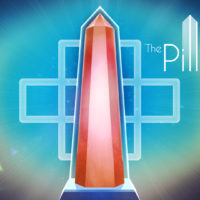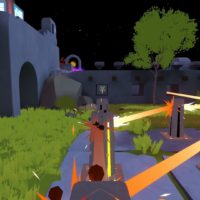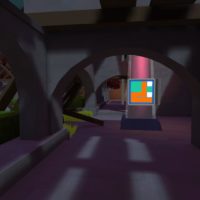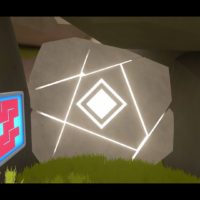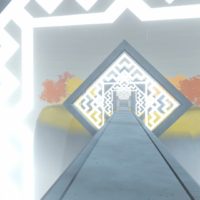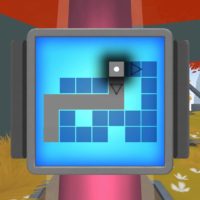R-Type Final 2

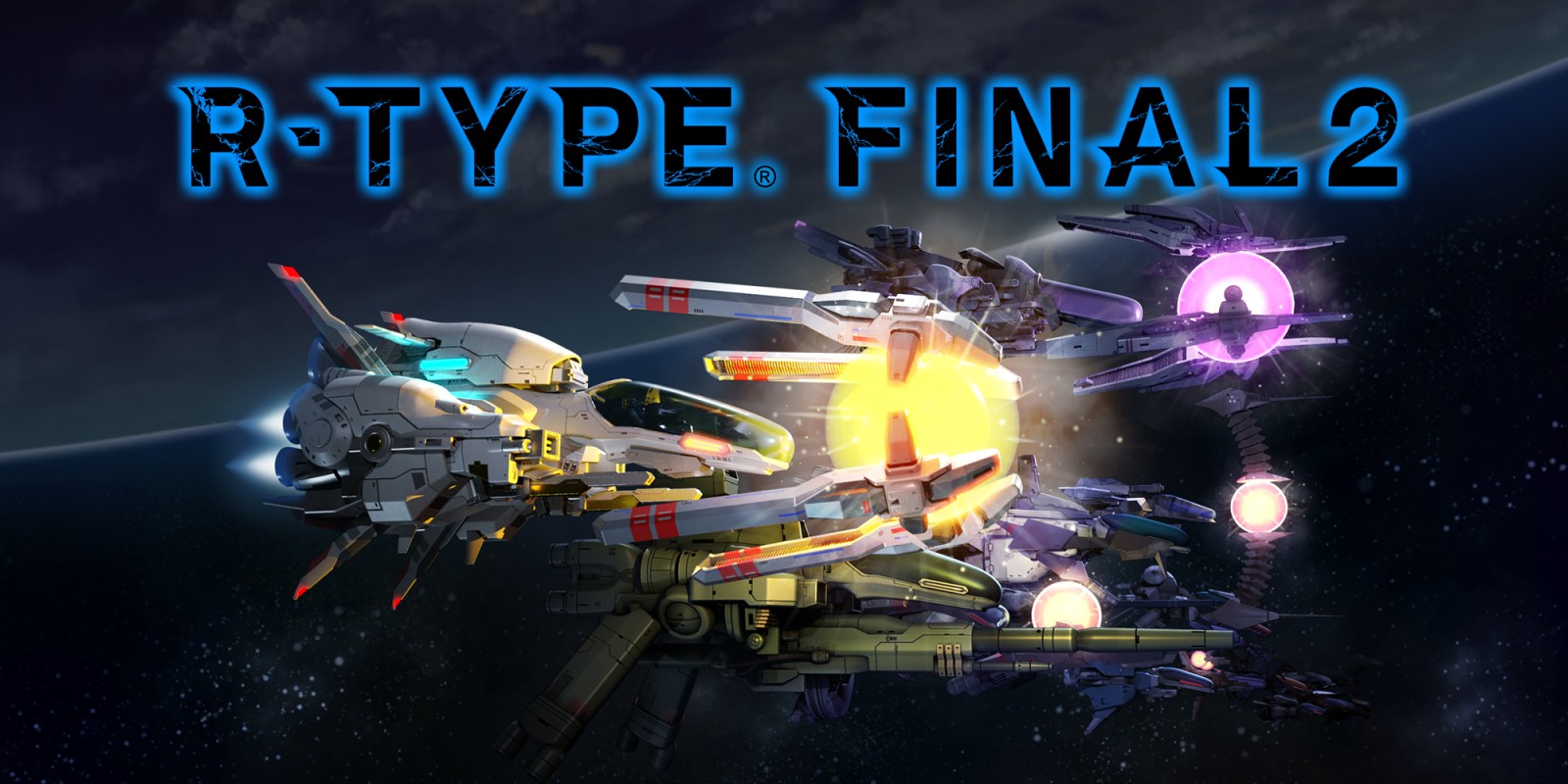
There are three things that are certain in life; taxes, death and a video game series abusing the word ‘Final’. In fairness, it’s likely that if a developer includes ‘Final’ in the title, it is often the case for the first entry into the series. That is until it sells millions of copies and the developers are forced into creating a sequel for the fans. The 2004 arcade style shooter, R-Type Final, was supposed to follow this trend. That was until Granzella Inc took the opportunity to crowdfund a sequel which raised over $1 million. Enter R-Type Final 2.
At A Glance
| Scores | |
| Visuals | 6/10 |
| Sound | 4/10 |
| Gameplay | 7/10 |
| Overall | 6/10 |
| Positives | + Challenging gameplay |
| + Fun arcade shooter full of delightful explosions | |
| + Customisable loadouts with loads of options | |
| Negatives | – Inexperienced players need not apply |
| – Lacklustre graphics in places | |
| – Music is forgettable | |
| Launch Price | £34.99 |
| Our Playtime | 7 hours 45 mins |
| Available On | PS4, Nintendo Switch, PC, Xbox Series X|S, Xbox One, |
Starting life in the arcade explosion of the 1980s, R-Type plonks players in a spaceship to explore the final frontier and stop an enemy race known as the Bydo from invading Earth. The left to right side-scrolling action is a tried and tested formula as the ship moves around to dodge and return enemy fire. Pleasantly, in a world of huge 3D open world vistas and far reaching environments, R-Type Final 2 sticks to the formula and keeps things simple – a 2D space shooter that goes from left to right- after all, if it’s not broken, why fix it? And because of this ‘more of the same’ approach, the game appeals to both newcomers hopping into the cockpit for the first time, and diehard veterans of the series. Having dabbled in some R-Type action back in the black and white days of the 90s, I was interested to see how the series has evolved.
For newcomers, a warning: The R-Type series has never been known for being an easy ride, and Final 2 is no exception. In fact my only note on the matter simply reads ‘It’s bloody difficult’. Even as I stare at my notepad, I think this is an understatement. Even the entry level difficulty setting – ‘practice’ has frustrating moments and as you ramp up through the difficulty levels, things just get worse, as not only do more enemies appear, but they move at greater speed and shoot more frequently too. This is no doubt a hangover from the old arcade mantra – make it harder so the kids fire in more coins, and even though slotting 50ps into the console is no longer required, there are only seven levels to the main campaign, meaning that R-Type Final 2 relies heavily on the difficulty to pad out the run time.
That being said, the developers certainly coast down the fine line between making the game too difficult and giving the player just enough slack to keep pushing through. Granzella Inc have made the controls responsive enough, and slowing down or speeding up the ship is a simple button press. Various power-ups litter each of the stages, and all manner of orbs can be fired from the ship to aid in the destruction, though trying to control them in tight tunnels is an effort in itself. It is safe to say that all of the tools needed to make it through the levels in one piece are present, and only human error behind the controller, rather than unfair AI or simple bad luck, were to blame for failing missions. ‘Git Gud’ is certainly the message here.
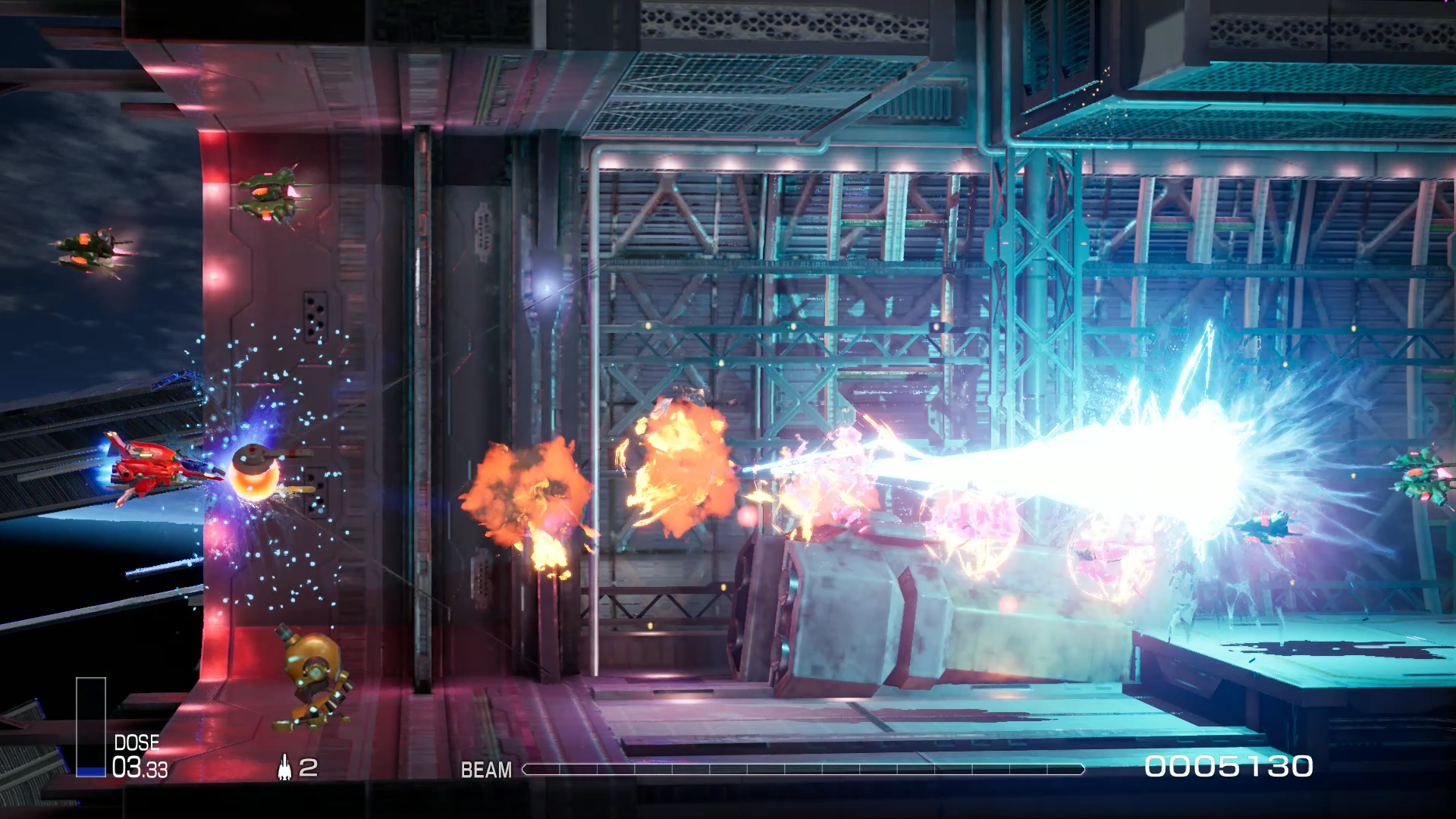
R-Type Final 2 ticks a lot of boxes in the looks department. Environments take inspiration from previous titles and are just as engaging as ever. As critters spawn out of various orifices, large ships move into attack formations, and enemies come whizzing into the foreground, the constantly changing world is full of life and energy that promotes frantic battle sequences. Complimenting the landscapes, enemies are thoughtfully designed creatures that pull inspiration from existing alien films, and much like any arcade shooter, explode into a vibrant mess after a few hits with the ship’s laser. The only points against the game’s design are the menus, and the pilots and ships are lacklustre at best. They are somewhat dull and feel like more of an afterthought. It seems like a small point to pick up on, but between restarting and testing different loadouts, more time will be spent in these menus than you’d expect.
The soundtrack to the game is another missed opportunity. Much like the difficulty, it seems the game’s music has been designed with loud arcade halls in mind, as it’s a quiet repetitive techno beat does nothing to inspire play. It is simply there to replace the silence and be drowned out by all of the on screen ‘pew-pew’ sound effects. I feel if it had been worked on a little bit longer, it could have been something more memorable that packs as much of a punch as the on screen action.
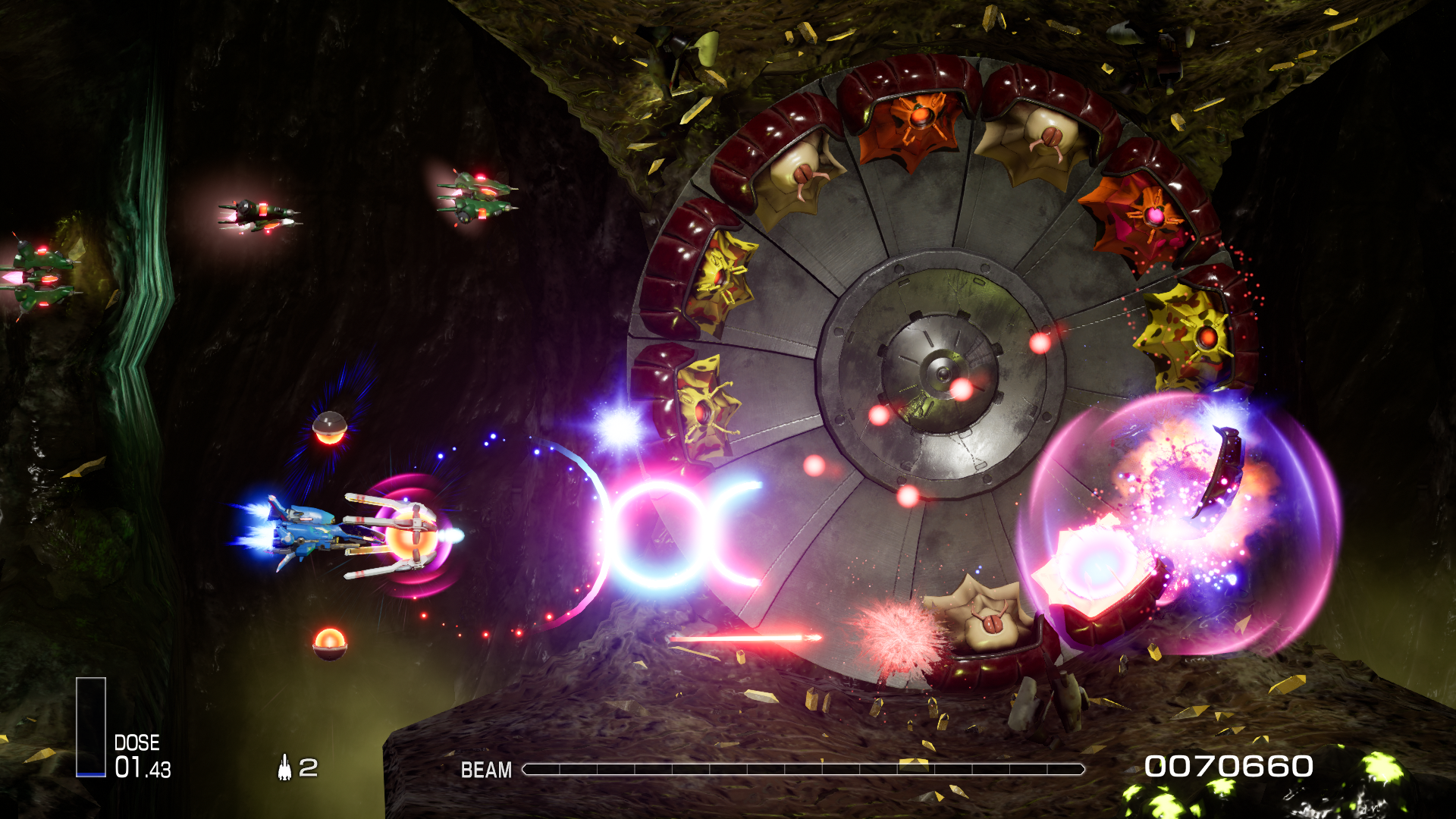
Once enough progress has been made, the game will give players the ability to unlock additional goodies such as additional ships, weapon upgrades, countless cosmetic upgrades and even higher difficulty levels, just in case the challenge was too easy. While there is a lot to unlock, for some the grind might be a little much but there are some lovely pieces of concept art to look at and build into a sprawling gallery as new enemies and evronments are discovered. It doesn’t add anything vital to the experience but it is fun trying to complete the various codex entries.
If you’re looking for a tough as nails arcade shooter, R-Type Final 2 is the game of choice. The controls are tight and although not perfect, the environments are pretty enough to keep you entertained. R-Type Final 2 treads a fine line between too tough to enjoy and just hard enough to keep you coming back for more, and even on the easiest difficulty there is a steep challenge where casual players will struggle. It would be hard to recommend the game to anyone who isn’t either an arcade professional or a glutton for punishment, but it’s one that long standing fans of the series will enjoy .
In the interest of full disclosure, the publisher provided VGamingNews with a copy of the game in order to conduct this review.
0 Degrees

I’ve never climbed a mountain before so I’m not in a position to comment if they have portals that teleport you from one area to another, or spikes that are shaped into perfect triangles. If they did, then Nerd Games & Kiddo Dev’s puzzle platformer 0 Degrees deserve a lot of praise for realism.
At A Glance
| Visuals | 6/ 10 |
| Sound | 4/ 10 |
| Gameplay | 6/ 10 |
| Overall | 4/ 10 |
| Positives | + Pixel art style |
| + Tight controls | |
| + Later levels a real thinkers | |
| Negatives | – Short and easy |
| – Annoying soundtrack | |
| – Inconsistent slipping on objects |
Published by eastasiasoft, 0 Degrees positions itself as a relaxing puzzle game where the goal is to navigate through a frosty tundra to the top of a mountain. All the action takes place on a single screen starting easy with tasks like jumping across a gap, before evolving into more complex puzzles. These involve activating switches, creating blocks and freezing platforms. Through the game’s forty levels, the difficulty rises although it never reaches the heights of impossible.
0 Degrees is your typical casual gaming experience – good in short bursts, but lacks real depth. Forty levels may seem like a lot to tackle, and considering one or two of the levels left me scratching my head, I rolled the credits within an hour. Similar games such as Super Meat Boy and even eastasiasoft’s other platformer, Rift Racoon, offers collectables extending the game’s lifespan whereas 0 Degrees forgoes all this for a quick finish and an easy Platinum Trophy. 0 Degrees is fun while it lasts, and with the blocky two dimensional pixel art style, it oozes charm but the short run time kills the experience. This isn’t helped by the music. The soundtrack is fitting, but the one song, plinky-plonky approach had me reaching for the mute button around level 20.
Being billed as a casual platform game, 0 Degrees is a tight platforming experience that needs a degree (yep) of accuracy. When completing a jump, the explorer would come to a complete standstill, if the timing was off by a tiny amount, it would result in a quick restart. There were a few occasions where the developers remembered ice is slippery and I would careen off the cliff, but for the most part it was manageable.
0 Degrees is more half baked rather than Baked Alaska, a standard left to right platform game that is not only easy, but woefully short. There is so much promise; the art style is rather joyful and later levels add a little challenge but the game needs fleshing out. If there was a little more challenge or double the amount of levels, I’d recommend the game in a heartbeat.
In the interest of full disclosure, the publisher provided VGamingNews with a copy of the game in order to conduct this review.
Resident Evil Village

As a lifelong fan of the Resident Evil franchise, I’m not going to pretend that I wasn’t thoroughly hyped for a new entry in the series. And I wasn’t alone – Resident Evil Village was eagerly anticipated the world over, and with rumours swirling that Capcom had taken a more supernatural approach this time, interest in the new game was sky high. The big question is “is the hype justified?”, to which I reply “read on and find out”.
At A Glance
| Visuals | 9 / 10 |
| Sound | 8 / 10 |
| Gameplay | 8 / 10 |
| Overall | 8 / 10 |
| Positives | + Stunning visuals depicting deep and varied areas |
| + Merges the best gameplay features of previous entries | |
| + Compelling cast of new characters | |
| Negatives | – Plotline causes some eye rolling and sometimes breaks immersion |
| – Ties to previous entries feel forced and a little unnecessary | |
| – Some might find the run time too short |
Village takes place three years after the events of Resident Evil 7: Biohazard, with Ethan Winters reprising his role as the main protagonist. Ethan and his now-rescued wife Mia have moved to a small town in Romania in the hopes of putting the events of the last game in their rearview mirror and raising their 6-month old daughter, Rose, in peace. Of course, nothing ever goes smoothly and Ethan soon has to set off on a mission to save his daughter from some rather grisly goings-on.
Despite the game being a direct sequel, you don’t necessarily have to have played Biohazard in order to enjoy the new installment, with Capcom offering a solid recap as part of the introduction. And speaking of the introduction – my, oh my, are we treated to a doozy here. Equal parts mesmerising, haunting and downright shocking, I was immediately sucked into the game, overwhelmed with intrigue and curiosity at where things might lead.
It doesn’t take long for all of the weirdness to begin, and I must say that the pacing in the early part of the story is masterfully done. You’re hit with a mixture of tension and frantic action that leaves your head swimming at what’s going on, and it’s not until your first reprieve that you finally take a breath, stop, and think “what on earth just happened?” You’re introduced to the cast of antagonists en masse, and with each designed around a different aspect of popular horror/fantasy, it’s a truly weird, wonderful, and interesting little group you have to fight your way through, for sure.
It was the gigantic Lady Dimitrescu who stole the hearts of all social media prior to release, and I can see why Capcom made the colossal woman in the hat the centrepiece of their promotions. Lady Dimitrescu is bursting with character and stands head and shoulders over the other antagonists as being the most complete and well thought out. And while we’ve had enormous stalking monsters quite recently (see: Mr X in the Resident Evil 2 remake), Lady Dimitrescu leaves a much greater impression, and without a doubt boasts one of the cooler boss-fights in the game.
On a more technical level, even in the PS4 version the graphics in Village are beautifully crafted. The snow covered squalor of the village is perfectly depicted and offers the perfect backdrop to the grisly story laid out before you. Everything seems to be covered in a palpable layer of dust that accentuates the ancient and grim nature of the locations Ethan is forced to fight through, and nowhere is this more noticeable than Castle Dimitrescu, which is stunningly brought to life. There are a few noticeable issues with render distance that might cause more graphically discerning players to turn their noses up, but a couple of slowly loading textures certainly didn’t do anything to spoil my enjoyment of exploring the village and its landmarks.
While Village follows Biohazard in offering a first-person perspective, it’s play style is much more akin to Resident Evil 4 & 5, with an action-heavy approach that emphasises straight shooting over traditional horror. In the best possible way, the controls offer very few points of discussion, as they’re both tight and responsive, with a touch of aim assist to give you a hand where you might need it too. Enemies tend to come in tricky but not unmanageable swarms, and while a few traditional bullet-sponges are thrown in too, they’ve thankfully been lessened from previous entries where they got a little repetitive.
With action taking centre stage it does mean that the scares are few and far between, and I’ll admit that I’d hoped for a few more once it was all over. That being said, the frights we’re given are very well crafted and memorable, giving a ‘quality over quantity’ feel that I can certainly appreciate. There’s one jump-scare in the village that you can see coming a mile away but that works in spite of the warnings by virtue of being perfectly timed; it’s one of my favourite moments in the entire game and, in my opinion, stacks up against some of the best scares in franchise history. There will undoubtedly be a contingent of fans who are disappointed that Capcom seemingly ‘took a step back’ to a more action focused game after the horror masterclass of Biohazard, but Village does very well in walking the fine line between blasting innumerable horrors and creeping through tense emptiness while waiting for the next attack.
And to that end I have to praise the level design in Village, which sees Capcom do a great job in mixing up the environments in a nuanced way, allowing players some variety whilst mostly sticking to their core theme. The one exception is Heisenburg’s Factory which, despite being well designed in-and-of-itself, I personally found incredibly difficult to play through. For me, that level’s theme felt so foreign to everything that comes before or after it that I couldn’t shake the feeling that it belonged in an entirely different game. I can certainly appreciate the Mary Shelley’s Frankenstein vibe that Capcom was going for, but their attempt to bridge the worlds of old and new brought a disconnect in aesthetic and vibe that was just too jarring, and was the games only major miss in my opinion.
And with the emphasis back on action, Capcom revives the travelling merchant concept as well, allowing you to periodically pick up various new weapons, ammunition and health items to help you along the way. The areas housing Duke, as the clinically obese carriage-ridden salesman is known, become something of a safe space in each level, and players will regularly find themselves returning to their rotund friend to sell their occult treasures, purchase some much needed upgrades, and save their game at the ever-traditional typewriter. The simple crafting system from Biohazard also makes a return, allowing you to whip up health items and ammo on the fly should you need to, making ammo management less of a concern than in previous entries and keeps the action fun and (relatively!) stress free.
While I’m quick to offer the gameplay some deserved praise, my thoughts on the storytelling are a little less effusive. After racing through the effective and intentionally befuddling introduction, you’re left with very little idea of what’s going on for the majority of the game. I can understand that there has to be some subterfuge in the storytelling in order to build to a big reveal, but Capcom gives you such tiny scraps of information to work with that you’re given very little purpose to your actions beyond “I have to rescue Rose”, over and over again.
Knowing that the game was based around the theme of the supernatural and fantasy horror, I had expected Capcom to weave Umbrella Inc.’s unscrupulous science experiments into the heart of the mystical goings-on, but with no mention of these ties until the very last moment of the game there’s little to link Village to the rest of the franchise from a story perspective. This lacklustre explanation of the village and its residents makes much of the progression feel incredibly paint-by-numbers and you’re dragged through the game by the regularity of the action instead of the story.
For the most part, I’m able to forgive sparse storytelling in an action-heavy game but there are a few moments, particularly centred around Ethan and his injuries, that definitely required more explanation to help out the audience. We’ve seen injuries miraculously disappear following a quick squirt of ‘First Aid Spray’ in the past, but some of the wounds shrugged off by Ethan in the cutscenes are totally ridiculous and broke my immersion entirely. I appreciate that we’re talking about a series riddled with zombies and secret experiments and that we’re expected to suspend our disbelief somewhat , but this was specifically an area that needed more acknowledgement by the characters so that the laughable nature of the events is given at least some sense of credibility to the player.
As I played through Village I definitely got the feeling that I was playing through a skillful blend of other Resident Evils that came before it. Castle Dimitrescu feels like a modern take on the Spencer Mansion and the original Resident Evil; quirky puzzles and small groups of creepy enemies are set amongst a once splendid, but long since run down venue. The village itself is incredibly reminiscent of Resident Evil 4, and moments filled with swarms of enemies bring flashbacks to being overrun by majini in Resident Evil 5. Pulling together the best aspects of older games and merging them with the updated first-person playstyle is a masterstroke, and one that I can see Capcom returning to in the future with much success.
There’s certainly a corner of the gaming community that expects every AAA release to offer 50+ hours of entertainment for their money, and I’m afraid to say that those people are going to be sadly disappointed here. I have a tendency to dally around when I play games – inspecting the environments and getting lost more than I should, and I finished my first play through of Village in 11 hours on the nose. I’d be the first to leap to Capcom’s defense in this one though, and say that the story and action reach a fantastic crescendo at the perfect time, and that adding even another two hours to the main story might have spoiled the engagement towards the end. There’s some nice post-game content that will keep dedicated players busy for a lot longer than the initial playtime too, including the return of the ‘Mercenaries’ missions and a tonne of both ingame and behind the scenes unlockables.
All-in-all, Resident Evil Village is a fantastic shooter that’s overflowing with grim and grisly visuals that add a flourish of horror to a wonderful repertoire of action. While the move towards a supernatural theme meets with mixed results, it’s impossible to argue with how enjoyable gameplay is, or the effort taken to merge the distant and recent pasts of the franchise into a new monster for the new age. Almost returning to it’s B-Move roots, the latest Resident Evil may have you chuckling in moments where you should be horrified and rolling your eyes at some of the plot, but that’s all part of what makes the experience so enjoyable. With all manner of beasties now thirsting for your blood and a smattering of references to games past, Resident Evil Village undoubtedly sets a new -and successful- blueprint for the future of Capcom’s survival horror franchise.
Layers of Fear VR

Let me tell you a little about myself; along with my love of video games, I’m a massive fan of gory horror movies. The ones where there’s a slow, methodical killer on the loose who always manages to kill unwitting teens, despite never breaking a sweat – those are my jam. So I can handle my jump scares, werewolves, aliens and body dismemberments. but when it comes to physiological horror with atmospheric buildups and unbearable tension, I fall apart faster than an M. Night Shyamalan movie. I cannot handle characters being either haunted or terrorised by their own insanity. So when Bloober Team reached out and asked us to test their first-person psychological horror Layers of Fear VR, a game about an artist being terrorised by his own insanity and ghostly beings, I felt it was time to strap on the PlayStation VR headset and my big boy pants.
It was time to nut up or shut up.
At A Glance
| Visuals | 7/ 10 |
| Sound | 7/ 10 |
| Gameplay | 5/ 10 |
| Overall | 7/ 10 |
| Positives | + Engaging, mind bending story |
| + Well crafted sense of tension throughout | |
| + Unexpected jump scares | |
| Negatives | – Awkward control scheme |
| – Lack of polish | |
| – Can be repetitive |
As all good horror films start, you arrive at a big stately home in 1920s New York, on a particularly stormy night. Knowing that the house is yours because you were a successful artist is somehow not comforting, but I can’t quite tell you why. We quickly learn that you had a wife and daughter but they are no longer at the house. After a brief introduction to the home you set about crafting your latest portrait, planned to be your magnum opus. But our artist begins his descent into madness shortly after seeing the blank canvas and the fun and games begin. You gradually unravel what could have happened to your family, but being a horror game, pieces of information are deliberately ambiguous in order to allow for multiple endings.
The main aim of the game is to explore your mansion and gather the materials to create the masterpiece you have been obsessing over by solving simple puzzles. When you start exploring the mansion it seems normal enough, walking corridors with an air of determination to finally get this painting done. This new found motivation lasts until you reach your first room however, as unnatural happenings start occurring almost immediately. They start relatively innocently; doors slamming, writing on walls, and paintings changing shape, but as you progress objects start being thrown and entire rooms begin to change shape. Needless to say that as you progress, you realise that thing you thought you saw out of the corner of your eye – well, it was there.
Layers of Fear VR has a relatively short run time of around five hours, spanning six chapters. It does pack a lot in and as a result, you are a nervous wreck by the end of the game due to the sheer amount of jump scares and ghostly encounters. While some of the horrors are predictable (going against the advice scrawled on the walls isn’t recommended), it did leave me anxious to such an extent I dreaded taking off the VR headset for fear that something had sprung out of the TV.
While you’re being scared within an inch of your life, it has to be said that Layers of Fear VR is certainly a game to be admired visually. The mansion itself has a Victorian-gothic appeal and there is always something to look at, from huge oil paintings to random notes strewn across the place, and these visual distractions are a godsend considering you’ll be spending most of the time walking through corridors. Any ghosts you may encounter are joyfully gruesome, and the entire aesthetic goes hand in hand with the tension and atmosphere being created. We do want to note that our playthrough was on a base PlayStation 4. PS4 Pro and PS5 players might even get a boosted experience due to the consoles’ additional power.
A little disclaimer though, as with any virtual reality game, some players can experience motion sickness while wearing the headset. Layers of Fear VR has options in place to help mitigate any sickness, but it is worth mentioning that players sensitive to motion sickness caused by VR play – particularly games that involve moving around environments – may feel a little queasy during this in game. If this is the case, we’d suggest going for the standard, non-VR version.
And it’s not only motion sickness that might drive you to the 2016 original instead of the VR version. The controls require you to use two PlayStation Move controllers rather than the trusty DualShock 4. On the face of it, this makes sense – as you manipulate and interact with objects with a wave of either controller Layers of Fear VR creates an immersive experience. Something as simple as closing a door, or picking up a photo will always feel more satisfying when acting it out rather than simply pressing a button. The troubles come when it comes to moving around.
Playing the game, it’s obvious that developers had to choose which part of the immersive experience to focus on – the interaction with objects or having slicker movement. As the Move controllers don’t feature any kind of analogue stick you’re forced to press buttons to walk and turn. Turning in particular feels both awkward and antiquated, as you slowly rotate one way or another like a 1990s sentry NPC. Of course, this is simply an unfortunate downside of the hardware and not something Bloober Team or VR porting specialists Incuvo could control. If a standard controller was implemented, there would be nothing differentiating it from the standard version, save that motion sickness of course.
When you’re not battling against simply walking, I did encounter a few technical glitches where I got stuck behind chairs, in a large trunk, and even behind a fireplace. These were by no means frequent and restarting isn’t too much of a faff but it did detract from the overall presentation and experience, resulting in a feeling that there was a lack of polish.
Despite all of the technical challenges, Layers of Fear VR is a game that succeeds in its mission of crafting an engaging story that terrifies players. Yes, it can get a bit samey, with repetitive corridors and straightforward puzzles, but like any good horror game, this just adds – dare we say it – another layer to the proceedings. The constant changes to the artist’s state of mind, his unreliable narrative, and even little things like jumping out of your skin when a rat scurries past your feet, all culminates in a well-crafted, atmospheric experience that’s chock-full of surprises.
Coming from someone that doesn’t typically enjoy this kind of horror, I discovered that the scariest thing about Layers of Fear VR wasn’t what I expected it to be. The horrors unfolding in-game aren’t the most spine-chilling, in fact – after I’d gotten over the initial hesitation – they were rather enjoyable. The limitations of the hardware however were frightful, meaning that the game is just two analogue sticks away from being a must-own title for VR players. Sadly, the things that let Layers of Fear VR down are outside the control of the developers, but if you power through the technical issues, you’ll find a game that gives a satisfactory return on your investment just on the story alone.
In the interest of full disclosure, the publisher provided VGamingNews with a copy of the game in order to conduct this review.
Erica

What if Han was arrested for shooting Greedo? What would have happened if Frodo left the One Ring to Treebeard? Will there ever be a sequel to the Matrix?* These are all questions I’ve asked myself during, or shortly after a film. Once the credits have rolled, there’s always a little voice in my head asking, “What if this happened instead…”, and I’m certain I’m not alone with this line of questioning. In fact, I know I’m not alone in thinking like this because filmmakers have been using tools for decades allowing them to explore alternative versions of films.
At A Glance
| Visuals | 10/ 10 |
| Sound | 8/ 10 |
| Gameplay | 5/ 10 |
| Overall | 8/ 10 |
| Positives | + Well acted and high quality production |
| + The plot twists and turns | |
| + Multiple endings to explore | |
| Negatives | – Middle part drags a little |
| – Some scenes don’t always match up | |
| – A few pointless options that don’t add to the story |
After being tried in movie theaters in the 60s, the art of an interactive video didn’t really have an impact until the 1980s, when technology gave the medium a little boost. Full Motion Videos (FMVs) were created in arcades in which a scene could play out in different ways depending on which button was pressed. In the 90s, as home consoles could hold more data, developers experimented with creating interactive films. The notorious Night Trap catapulted this new genre into the limelight when it was dragged through the US senate in one of the many nonsensical “video game causes violence” hearings. And despite the game being a blurry mess of cheese and campy horror, it did give budding film and game designers ideas.
Fast forward to 2019 and things had changed a little. We were living in a time where the film industry had developed higher quality film equipment and video game compression is a lot better than it used to be. We’re able to explore the interactive movie experience like never before; created by London based Flavourworks and published by Sony, Erica is a videogame-movie in every sense of the word.
In Erica you play as the titular Erica Mason, a young woman pulled into a world of cultist obsession and murder. We quickly find out that when Erica was a child, her father was brutally murdered in front of her. As a young adult, murders relating to her father start occuring and she is brought back into a world she had desperately wanted to forget. The set up is beautifully gory and there is enough injury detail to impress horror aficionados. We’re not going to spoil any of the details, but from here on out the game gradually ramps up the tension and violence through a well thought out plot.
Having a well planned story is all well and good but you need a well versed cast to bring it to life. Luckily Flavourworks have somehow done just that. Holly Earl who has starred in Cuckoo and Skins heads up the acting talent and holds her own through multiple different scenarios. Terence Maynard (Edge of Tomorrow, The Dark Tower) and Chelsea Edge (I Hate Suzie) offer great supporting characters, offering real depth throughout the 90-minute playthrough.
The outcome of Erica is determined by your choices made throughout, and the beauty of how this is pulled off is extraordinary, with Flavourworks not limiting the outcome to one or two key decisions. Granted, there are a few redundant actions, but most have their own consequences and these gradually change the direction of the story.
And when it comes to actually selecting your options, Erica implements some clever techniques. Speech actions are as you’d expect, options float around the corners of the screen, waiting to be clicked. Physical actions such as locking a door, opening a box or interacting with objects relies on stop motion and practical effects. The sensitivity of these interactions are based on how fast you swipe the controller, which was a really interesting visual and was nigh on flawless. I did however spot a single rogue fishing wire when opening the doll’s house – I guess we can expect to see that on an upcoming Buzzfeed article titled “You won’t BELIEVE these 25 movie mistakes!”.
The control scheme for Erica certainly isn’t what you’d expect. The first option is to use the Dualshock 4’s touchpad as a cursor, but swiping or hovering over the on-screen options feels awkward due to the location of the pad and the gestures required. It feels like an odd choice, particularly as there are two perfectly suitable analogue sticks, each offering a much wider range of motion. The other, frankly bewildering, choice is using your phone as a controller. Downloading the Erica For PS4 phone app turns your phone into the touchpad and since your mobile is engineered to be used one handed, it’s much more comfortable to use. Surprisingly, there’s no delays to your inputs, so if you have your phone to hand it’s certainly the preferred method we’d recommend. Just plug it in to charge because that link drains the battery.
It’s safe to say, with the deep story and brutal injury detail, Erica is more comparable with a horror film than a videogame. Unfortunately, the similarities also stretch to one of the more common issues with movies of this type, and men over 50 – a sagging middle section. Between an intriguing set up and the exhilarating finale, the middle portion is sadly forgettable. In fact, during the multiple playthroughs, I had trouble even remembering which options I had already explored. In reality this equates to around 15 minutes of the 90 minute run time so it’s hardly a dealbreaker, but it is something to be aware of.
The biggest challenge developers had with Erica is knitting a game with multiple pathways into one coherent story but for the most part, each action you’ll take throughout the game leads seamlessly into the next part of the plot. There’s the occasional scene that doesn’t quite flow, most memorably when Erica randomly wakes up in a garden. How you get there depends on your actions, but only one outcome really connected with the scene. Whilst few and far between, these moments can be jarring when you come across them and leave you scratching your head..
At 90 minutes long, Erica is a great interactive movie experience. Save for the few scenes that don’t gel together and the middle portion of the film, Erica is a fantastic experience that will have you gripped across multiple playthroughs. The cast, in particular Holly Earl as our lead Erica Mason, deliver top end performances throughout and the game doesn’t impose too many pointless decisions in order to constantly drive the story forward. All of this is even more impressive when you consider how many different twists and turns you can take with each playthrough. Erica gave me the satisfied movie-goer experience without the overpriced popcorn-beverage combo or the background chatter of other humans. What’s not to like?
* VGamingNews refuses to acknowledge the existence of redacted or redacted on account of them only working to diminish one of the greatest movies of all time
Neptunia Virtual Stars

C’mere… Today, I am going to tell you a secret about running a website that reviews video games.
*whispers* Contrary to what friends and family think, we don’t know about every single video game ever created.
There are approximately 3000 games on the PlayStation 4 and I can categorically say I’ve played less than 5% of them. The Neptunia series is unfortunately one series that has passed me by, but my play through of Neptunia Virtual Stars has inspired me to change this.
At A Glance
| Visuals | 6/ 10 |
| Sound | 5/ 10 |
| Gameplay | 6/ 10 |
| Overall | 6/ 10 |
| Positives | + Characters are witty and 4th wall breaking |
| + Introduces the world of VTubing | |
| + Gorgeous artwork | |
| Negatives | – Fiddly control scheme |
| – Constant & repetitive yammering | |
| – Uninspiring level design |
I’ll start by saying that, as a spin-off, Neptunia Virtual Stars from Compile Heart and Idea Factory doesn’t require you to have any understanding of the decade old series in order to enjoy it. Handily, when you first boot up the game, you are met by Goddess Neptunia (Nep) and her friends, Blanc, Noire & Vert; they set the scene and introduce their world of Gamindustri, a digital haven full of manga and video games.
Before you know it, a distress call from the planet Emote pulls Nep and the gang to another digital universe known as Virtualand. As the team gets their bearings, they find out they’re not the only ones brought in to save the world from the invading forces known as ‘Antis’. Joining the Goddesses are “Me” & “You”, two Japanese VTubers from our world.
For those unfamiliar with this term, VTubers inhabit a subsection of YouTube where content creators create their own animated characters, plotlines and backstory and present them as a typical YouTube video. Think about an animated 4000-year-old vampire reviewing music videos and you’ll be along the right lines.
Once everyone has been introduced, your party sets off on their hack-and-slash adventure to save the world from Antis. Each level in Neptunia Virtual Stars is split into two maps, connected by a mini boss with a big bad boss waiting at the end. Breaking up the main game is a side quest where you have to rebuild the main plaza by utilising currency dropped by defeating enemies. This is fun for the first two levels, but it quickly becomes repetitive as you have to grind to level up and rebuild the plaza.
Over the course of eight chapters you’ll find that while the difficulty ramps up, essentially, you’re playing the same level with a different layout. Each world is typically spread over one floor and if it wasn’t for the vibrant themes of each world, the levels would easily blend into one another. You’ll even start to anticipate where the enemies are going to pop up; hint – that will be any open space whatsoever.
Neptunia Virtual Stars definitely flips the script with its combat. You don’t kill the Antis, you ‘charm’ them into submission by… either stabbing or shooting them. Rather than have one character with multiple weapons, the Goddesses and VTubers are each assigned their own weapon. The controls are a tad convoluted but anyone can be called using a combination of buttons. Nep and the gang are assigned the firepower while“Me” & “You” face off with blades and fists.
Playing as Neptunia or one of the Goddesses has one major advantage: the boost. By tapping the ‘Circle’ button, the characters activate rocket shoes allowing you to zip around enemies and the map and due to the enhancements in speed, most of my time was spent playing as Nep. Although she is highly annoying shouting something every fifth shot, she is the protagonist and I put up with it in exchange for the speed boost. Silver linings..
Neptunia Virtual Stars really shines with it’s characters, particularly the Goddesses. They know they are in a video game and are constantly making fun of each other.;Neptunia is constantly reminding you she’s the hero of the story, and all of the characters bounce off one another really nicely. The anime artstyle is gorgeous too.
Environments are themed on popular sections of the internet; a world made of pancakes and sweet things for the food review channels, or certain bluebirds wielding rocket launchers for the social media section. Our main heroines pop on the screen, even supporting characters are designed to be memorable. Yes, there is an element of fan service with the costumes to unlock (or buy as DLC) but the personalities of all of the characters still manage to shine, even though the overall plot is a somewhat by-the-numbers affair.
Utilising real-world content creators is a great idea, but unfortunately the only playable VTubers were created solely for Neptunia Virtual Stars. The game does have established VTubers, and it would have been nice to have them playable with unique abilities relating to their backstories. Instead, they are pushed to loading screens and flash their support when a powerup is activated. This felt like the big selling point of Virtual Stars was nothing more than a Stan Lee-type cameo; great for the people who were in-the-know, but it doesn’t add anything of value to anyone else.
I’m not in the best position to speak about how Neptunia Virtual Stars compares to the rest of the series, having not played another entry. I can say however that, underneath the fan service and incessant yammering during battles, you have a mindless, fun dungeon crawler that’s full of wit and charm. Yes, the environments and plot are stale and it can feel like a slog at times, but the self-awareness and comedy of the script acknowledges these issues constantly. This is perhaps why I kept playing. It may feel like a cheap solution to acknowledge your flaws so brazenly without attempting to fix them, but for the most part, I have to admit that it works. Overall, I’d say that, in spite of the repetitive levels, the gorgeous art style and the characters are enough to keep you invested until the final credits roll.
In the interest of full disclosure, the publisher provided VGamingNews with a copy of the game in order to conduct this review.
The Pillar: Puzzle Escape

Remember the days of leaving the house? I do. One of my favourite pastimes was visiting escape rooms. You know the ones; you pay a stranger to be locked in a room for an hour and you have to solve obscure puzzles in order to get out. Over the last year, no matter how much you pay your spouse to lock you in the bathroom, there’s nothing like the feeling of achievement of breaking out of a room themed around the zombie apocalypse. Developer, Paper Bunker have tried to replicate this feeling with The Pillar: Puzzle Escape albeit minus the zombie apocalypse.
At A Glance
| Visuals | 5 / 10 |
| Sound | 5 / 10 |
| Gameplay | 7 / 10 |
| Overall | 6 / 10 |
| Positives | + Puzzles that challenge
+ Good difficulty curve + Pleasant environments & ambient music that’s not intrusive |
| Negatives | – Over before you know it
– Puzzles can become samey – Platinum trophy pings half way through the game |
As the name suggests The Pillar: Puzzle Escape is a puzzler that puts you in a strange world in which you have to escape. It’s great when the title of the video game explains what you have to do. What sets this apart from other puzzle games is that it is styled after the escape room format. Set in a first person view, you have to explore the environments to find triggers to activate pillars. These pillars then have different types of problems attached to them which need solving in order to progress.
This premise might sound simple but as the game progresses, the problems get harder and activating pillars becomes more elaborate. Puzzles are presented in an electronic grid full of squares. They start off simple, the first one has you completing a line of coloured squares, but they soon progress to path finding and repeating multiple sequences. The drawback with these, is that the types of puzzles are limited and can be repetitive despite the rising difficulty.
The environments you traverse also form part of the problem solving. They hold clues, such as a combination to a door or a random pattern that you’ll need to memorise. You’ll also need to work out how to trigger the pillars. Again, they start relatively simply such as finding a pad on the floor. They then work themselves up to you having to carry out a complicated set of actions. On one of the game’s later levels, there was a 25 minute period where I was certain I’d solved a particular part of a puzzle when it transpired I didn’t walk through a doorway in the correct way. Once I’d finished swearing, the rest of the level clicked into place.
It has to be said with The Pillar: Puzzle Escape there’s no hand-holding. Even button prompts such as pressing “X” to activate a puzzle screen are missing. You’re left to your own devices and it’s up to you to make the game work. Luckily, the puzzles don’t get too difficult and unlike the real life escape rooms, there is no time limit on completing each level. This is a godsend if you make silly mistakes like the one in the last paragraph, however there is a caveat. The Pillar: Puzzle Escape is an incredibly short game.
I managed to finish the game casually within about 3 hours. There are elements of unlockables to go back to, but that won’t extend the game past the 5 hour mark. Don’t get me wrong, I fully enjoyed my time in the strange worlds that were presented in front of me. The graphics, while not groundbreaking, served a purpose and were pleasant enough. The accompanying ambient soundtrack didn’t intrude or overstay its welcome and provided a relaxing atmosphere. It was just over a little too quickly. Of course, a short runtime isn’t necessarily a bad thing. When compared to most escape room experiences, they cost a lot more than the game’s £8.99 asking price and only last a third of the time, but it struck me that when the game finally gets into its stride, it is all over.
The short runtime isn’t the only quirk I found with the game. I played the PlayStation 4 version and I had to double take when just over half way through my playthrough, the platinum trophy icon pinged. Much like the length of the game, this is by no means a bad thing. In fact, for trophy hunters this is a quick win as it only took an hour and a half to get to. But after the platinum was collected was when the game really started to kick into gear and the difficulty really started to ramp up. I can see gamers stopping at this point and moving onto another game. It seems strange that Paper Bunker would effectively encourage their audience to not play the game to completion.
The Pillar: Puzzle Escape does exactly what it sets out to do. It’s a puzzle game that takes the escape room experience and presents it as a video game. Some puzzles are easy, some are frustrating but it never feels unfair. The short run time is unfortunately a big drawback, especially as there’s not a lot of content post game. The lack of any clues whatsoever, including the controls, also might put some people off. However, if you’re in the market for a game that gives you the feeling of an escape room without leaving your house, you can’t go wrong with The Pillar: Puzzle Escape.
In the interest of full disclosure, the publisher provided VGamingNews with a copy of the game in order to conduct this review.


